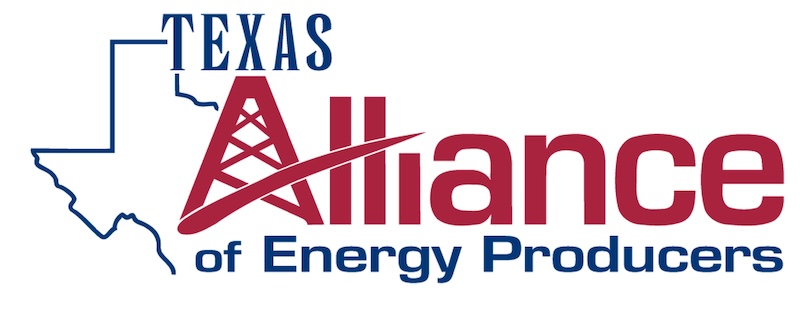Comments on the Proposed New §3.65, Relating to Critical Designation of Natural Gas Infrastructure, and Amendments to §3.107, Relating to Penalty Guidelines for Oil and Gas ViolationsAUSTIN, Texas (Oct. 29, 2021)— Submitted via [email protected] Rules Coordinator Re: Comments on the Proposed new §3.65, relating to Critical Designation of Natural Gas Infrastructure, and amendments to §3.107, relating to Penalty Guidelines for Oil and Gas Violations. Due November 1, 2021 To whom it may concern: Thank you for the opportunity to provide comment on this important rulemaking to protect natural gas infrastructure from haphazard power interruption resulting in disrupted energy production. The Texas Alliance of Energy Producers is supportive of the good work Commission staff and Commissioners undertook to develop this rule in collaboration with the Public Utility Commission (PUC). As we have reviewed the rule proposal, and in working with our members, operators, and other trade associations, we urge the adoption of this rule with some modifications to assist transmission & distribution utilities (TDUs) with more complete direction on the prioritization of natural gas facilities. The Alliance represents over 2,600 individuals and member companies in the upstream oil and gas industry; our members are oil and gas operators and producers, service and drilling companies, royalty owners, and a host of affiliated companies and industries in Texas and beyond. This rulemaking is an important step in securing adequate natural gas supply for both human needs and electric generator demands and is necessary to implement the requirements of Senate Bill 3. The Alliance testified during the 87th Legislative Session in support of this and similar legislation and we urged lawmakers during the process to focus on provisions that optimize the supply of natural gas to meet the demands of a growing state. In both chambers, the Alliance urged lawmakers to avoid costly provisions targeting marginal or low production wells that would result in them becoming uneconomic sooner, resulting in less overall natural gas production across the state. All sizes of companies hold these wells, and ownership does not change the fact that when the well becomes uneconomic due to production declines, market forces or government mandate, the well will be shut-in and ultimately plugged. Speeding up that process reduces overall production and adding new government mandates reduces the number of new wells coming online. The final version of Senate Bill 3 signed into law takes care to avoid direct harm to marginal well production which constitutes 10 to 20% of monthly natural gas production and the majority of oil and natural gas wells in Texas. Winter Storm Uri was a uniquely terrible storm that took the lives of over 200 Texans caught in blizzard conditions on roadways and in freezing homes after the loss of electric heating. Unlike the 2011 storm, which it has often been compared to, Uri resulted in an unprecedented peak demand of 77,000 MW as compared to 59,000 MW in 2011, according to AB Power Advisors in a 2021 presentation to the Energy Bar Association. By comparison the all-time summer peak for the Electric Reliability Council of Texas service area was set at 74,820 MW in the summer of 2019. This record winter demand also resulted in unprecedented peak load shed in 2021 of over 20,000 MW versus 4,000 MW in 2011. The temperatures were also much lower and for longer durations. As AB Power Advisors noted, in Austin, there was 162 consecutive hours at or below freezing in 2021 with a low of 6 degrees versus 69 hours below freezing in 2011 with a low of 18 degrees. Despite these incredible challenges to human safety and the environment, Texas natural gas performed, surging over 400% to meet electricity needs and keeping 99.95% of gas utility meters online to serve over 4 million utility meters. Behind those meters, some 16 million Texans were dependent on lifesaving natural gas warmth. The Commissioners quick work, prior to the storm, to adequately curtail gas delivery orders and prioritize human health and electricity needs made the difference to save lives. Still, more natural gas was needed to overcome the shortfalls in other types of generation. The Commission is right to further identify barriers to wider use of natural gas which has become essential as a critical fuel backstop to intermittent electricity generation. Many of the reforms after the storm have already been implemented due to the Railroad Commission’s leadership. These include spearheading reform of the critical customer designation at ERCOT. The form prior to February 2021 was inadequate to insulate the natural gas transmission system from interruption because it specifically forbade oil and natural gas systems in the field. The only available facilities for designation were those immediately connected to natural gas generation facilities. This has thankfully been rectified in the March 2021 form revisions and the Commission has urged operators multiple times over the course of this year to review their facilities and submit applications to ERCOT to prevent unnecessary interruption. Communications was also paramount during the storm and the Alliance appreciates the regular calls with Commissioners and Commission staff, often from their cars, shelters, or during home repairs, to rise above and beyond public service to seek information, ask for problem areas, and follow up multiple times a day to identify challenges to production and how to get operators safely back online. The Commission has continued those efforts by hosting multiple workshops to inform operators and the public of their rulemaking process. We want to thank the Commission staff for their attention and resolution in working with their counterparts at the PUC while also making outreach to the regulated electricity community to learn more about their unique challenges. The Commission should be commended for taking a new step to highlight the additional storage capacity in the state that can be utilized by utilities to build the resiliency of their fuel supply. Storage is the best way to add immediate resiliency to the electricity system by ensuring generators have adequate dry gas contracted for anticipated winter demands and that we utilize all of the state’s available infrastructure. Despite this good and thorough work, there are certain things outside of this rulemaking or statute that will be just as important to maintain production in a multi-day extreme weather event. During Uri, the impassibility of roadways was the single greatest factor in resuming large-scale production across all basins in the state. Many facilities across the state rely on oil haulers and water haulers to remove liquids from tank batteries to maintain production. If these withdrawals are interrupted, the facility is designed to stop producing to protect the well and the environment. Similarly, connectivity in telecom dramatically limited the oilfield in multiple ways. Modern operations have greatly deployed remote sensors to maximize operations to reflect changing midstream conditions. Pipelines also utilize telecom to facilitate orders and maintain flow. The interruptions during Uri to telecom and roadways made significant interruptions to production and resulted in slower resumption of full production. Employee safety is always the number one priority for operators and the ability to safely deploy crews into a storm or back into the field once a storm passes relies on safe roadways and effective communications and should always be prioritized to maximize production. The Alliance appreciates the work of the Commissioners and Commission staff in addressing these challenges which fall outside their jurisdiction. On the rule proposal itself, the Alliance urges the Commission to reconsider the definition of “weather emergency” to reflect the winter months that necessitate increased demand on natural gas for both human health and electricity demands. Summer does not pose the same challenges on dual drawl of the system and these rules could be tailored more to winter challenges. We support the Commission adopting the legislative language on “not prepared to operate” which was a critical part of Senate Bill 3 that recognized those facilities unprepared should not be included as critical customers, in order to prioritize electricity service to those facilities prepared and ready to operate. Unfortunately, in a storm, adequate electricity supplies for the full system are untenable but the Commission is right to recognize that all natural gas production and distribution is essential to modern life and that certainly bears true with utility needs. The Alliance supports the fee structure and qualifications for declaring “not prepared to operate”. We understand the supply chain mapping process will further define this rule and ensure operators are aware of neighboring systems dependent on their operations and that may entail listing certain facilities as critical. The Alliance would like to be a resource to the Commission in this important work and stand ready to assist with calls for data or any other assistance the Commission identifies necessary to complete their work. We join with our colleague oil and gas trade associations in recognizing the TDUs need assistance implementing this rule when presented with an incomplete picture as to the electricity generator needs and facilities. A prioritization scale listing natural gas facilities is appropriate and best informed by the natural gas production and transmission community. A prioritization model is included as an addendum to these comments. The Alliance supports a tiered approach that maximizes the most available, dry gas to be ready for consumption by electric generators. This necessitates starting with Local Distribution Companies (LDCs) which are a primary concern during curtailment but also provide needed gas to electric generators. Also, at the top of the prioritization scale should be natural gas storage, large transmission, and large processing facilities. Because of the necessity to burn dry gas, the Commission may find during this process that storage is insufficient for our growing population or that electric generators must incorporate storage and firm gas delivery into their contracts to be supplied sufficiently in a weather emergency. We urge the Commission to continue reporting on the availability of additional storage capacity and the recommendation for generators to utilize this infrastructure. The Alliance supports these reviews and stands ready to support action taken to build resiliency into the system with firm gas delivery where it is necessary. We support all natural gas facilities being able to declare as critical except for the statutorily authorized exception for “not prepared to operate”. Marginal production wells should not be the primary focus for critical status. This was said repeatedly throughout the legislative debate on Senate Bill 3 and is reflected in other sections of the bill. While marginal wells are not the highest priority, in some cases across the state, they may constitute a large portion of production, and therefore critical for local gas supply and distribution. Mapping and operator declarations will help the Commission to make better informed decisions than a blanket declaration that all marginal wells are non-critical or the inability of all wells below a certain production threshold to declare themselves critical. These wells are a majority of the production fleet statewide but approximately 10 to 20% of total production, a critical portion during a curtailment event. The Alliance would ask the Commission to provide guidance on what constitutes “not prepared to operate” and supports the inclusion of examples or categories that operators can clearly identify to ensure compliance. For example: wells that are idle or shut-in, a well or facility with marginal production that cannot economically support winter preparations, a well with a dedicated contract that does not serve or could not serve electricity demands, a complete on-lease use of the gas not tied to export of electricity, or finally a facility with no electricity connection at all. The purpose of this rule is to identify critical customers to avoid unnecessary electricity interruption and therefore cause subsequent problems with feedstock supply and availability. All measures should be taken to maximize gas production using the least amount of electricity. This will ensure shorter durations of load shed events and protect the broader system from harm. Due to the potential for mapping to change this tier structure, inclusion of the tiers on the Form CI-D could help the operator to properly categorize their facilities while still allowing the Commission to take quick action to update the tiers once mapping is complete. Likewise, guidance by the RRC and PUC to both operators and TDUs is paramount as the TDUs prepare their winter storm load shed plans. They will ultimately be charged with implementation during a load shed event and while this rule or statute is no guarantee that power will remain on to these facilities, regardless of their critical status, it is the best tool to inform their process before supply chain mapping takes place. We want to thank the Commissioners and Commission staff for their tireless efforts since February to determine what went wrong and how to ensure adequate power supplies are provided where they are needed most. Natural gas supplies play a critical role in meeting our energy demands and to improve the reliability and resiliency of the entire supply chain and grid demands, the Commission should continue to prioritize adequate storage supplies where most needed for human health and electricity needs. The Alliance stands ready to assist the Commission in their duties and appreciate your attention to these comments. Sincerely, Addendum: Natural Gas Facility Tier ProposalCritical natural gas facilities:
Tier 2: Tier 3: Tier 4:
|
Alliance Partners












